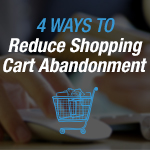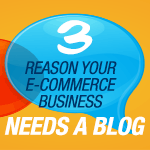 Once you’ve determined what to sell, it’s time to decide how to sell. Two of the main options for e-commerce businesses are to create a website, or sell on a third-party marketplace, like Amazon or eBay. There are pros and cons to each choice; here are some quick tips to help you figure out which is best for the needs of your business.
Once you’ve determined what to sell, it’s time to decide how to sell. Two of the main options for e-commerce businesses are to create a website, or sell on a third-party marketplace, like Amazon or eBay. There are pros and cons to each choice; here are some quick tips to help you figure out which is best for the needs of your business.
Option 1: Creating Your Own Online Store
PROS:
- Your store; your identity. With your own site, you’re not just another marketplace seller, but your own entity. It’s up to you to establish your brand, and build your business and reputation.
- Fewer transaction fees. Online marketplaces assess fees for the convenience and features of their sites, and many sellers feel “nickel-and-dimed.” The fees are usually small on their own … but they add up fast! With your own store, you’ll certainly have costs – like hosting and credit card transaction fees – but you also may have some control over those fees.
- You make the rules. Large online marketplaces usually have numerous rules and regulations in place – many with good reason considering the scope of their businesses. But with your own website, you can run your business as you see fit.
CONS:
- Success isn’t always simple when you’re on your own. With the freedom of your own store also comes the responsibility for a lot of the details that marketplaces like eBay and Amazon take care of for you. You need to be prepared to put in hours for setup and site maintenance, as well as dealing with your inventory and customer support issues.
- Success comes at a cost. As mentioned earlier, you’re going to be paying fees. Website design, prepackaged sites and hosting can get expensive, not to mention fees for third-party credit-card sales.
- Your customers need to find you. Online shoppers frequently visit sites like eBay and Amazon first for their searches, so maintaining your own site removes you from that potentially lucrative equation. You’ll also need to factor marketing and advertising into your time and monetary costs.
Option 2: Selling Via Third-Party Marketplaces
PROS:
- Start selling … immediately! There are millions of shoppers already on sites like Amazon and eBay and by searching for what you’re selling, they can easily get to your store.
- It’s easy to expand your reach. You can list your products on multiple marketplaces (e.g., on both eBay and Amazon). In addition, you can test shopper interest in products before committing to a large-scale selling operation.
- It’s turnkey. You won’t have to set up checkout and fulfillment support when you sell on large marketplaces, such as Amazon and eBay. And don’t forget loyalty and frequent-buying programs (like Amazon Prime), which can be very difficult to develop on your own – especially in the beginning.
CONS:
- The cost of doing business can be high. The turnkey model comes at a cost to sellers, usually deducted as a percentage of each sale along with other fees.
- Your identity is tied into the marketplace’s identity. You may find it’s hard to stand out when you’re part of large online selling sites, and that could limit your branding and ability to connect with customers on a personal level.
- You need to do your homework … and legwork. Large e-commerce marketplaces usually have strict listing requirements, and making sure all of your products conform to the rules can be a challenge. In addition, if you’re selling on multiple marketplaces, you may need to customize your listings to conform to the different rules – which can mean double the setup work. Finally, because the landscape changes frequently, you’ll need to check in regularly stay abreast of new developments.
The Bottom Line
Clearly, there are pros and cons to all of your e-commerce selling options. Carefully weigh what you think will work best for you – it can even be a combination of options! And remember, you can always change course as your business dictates. Happy selling!





